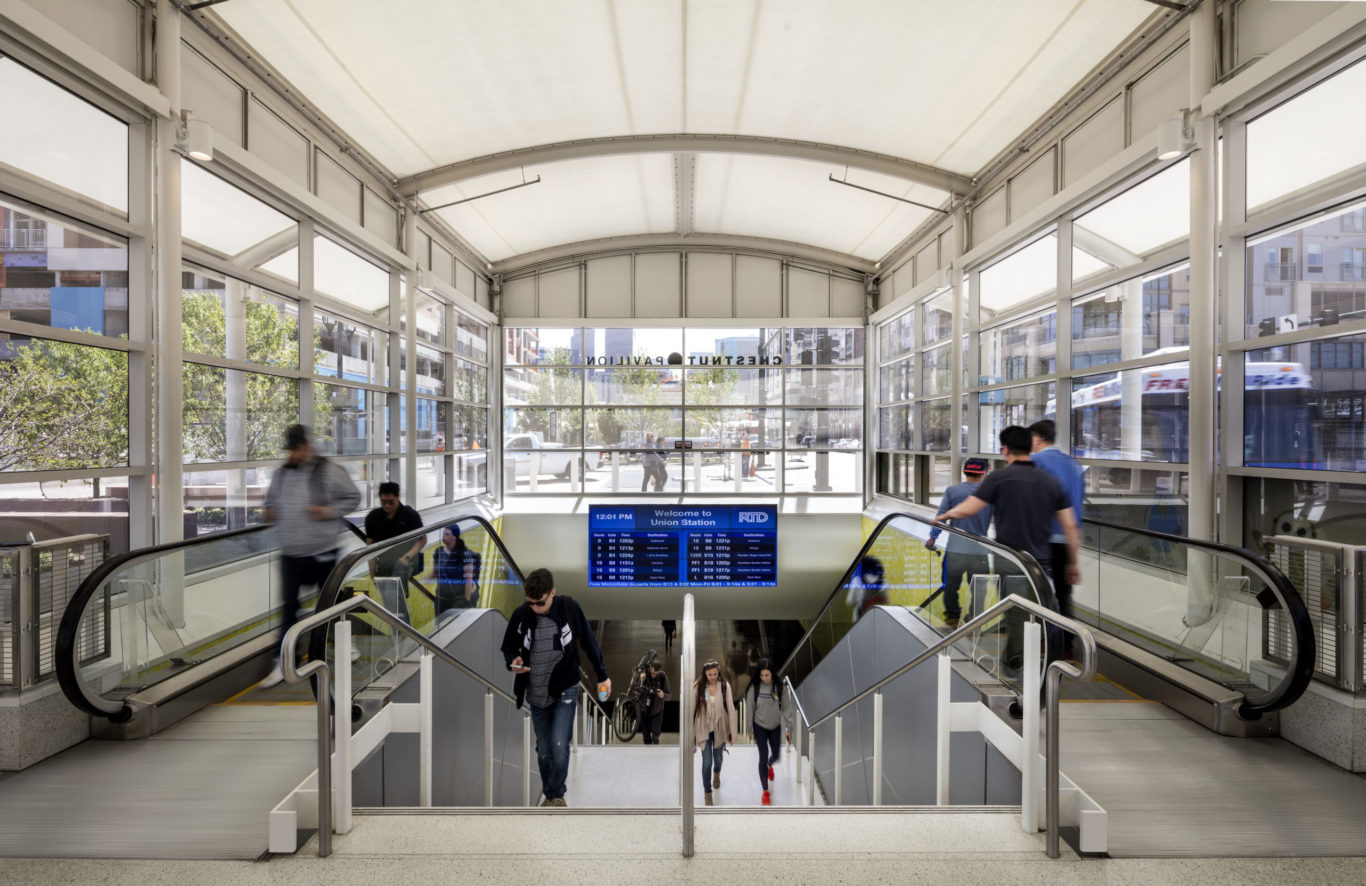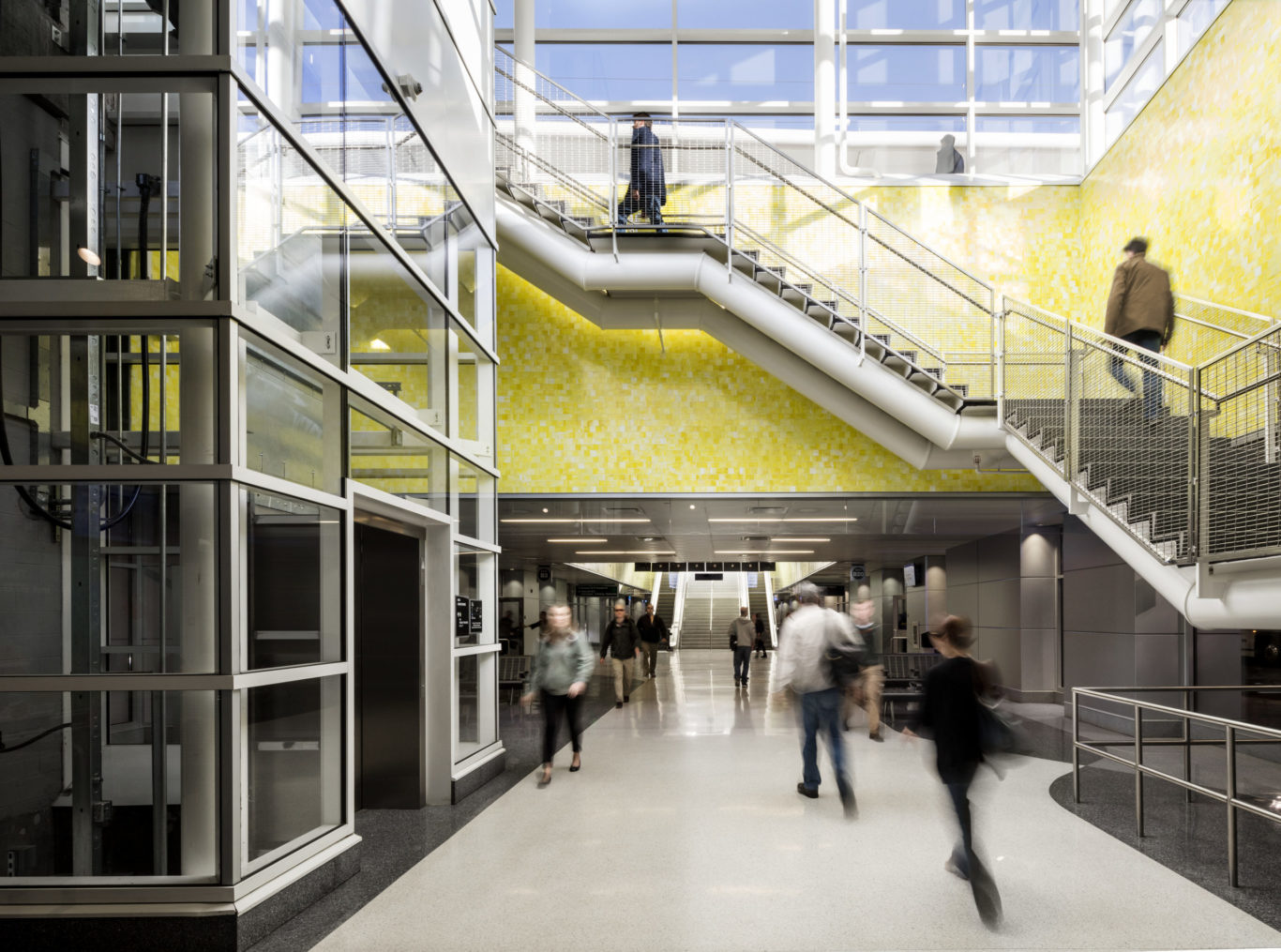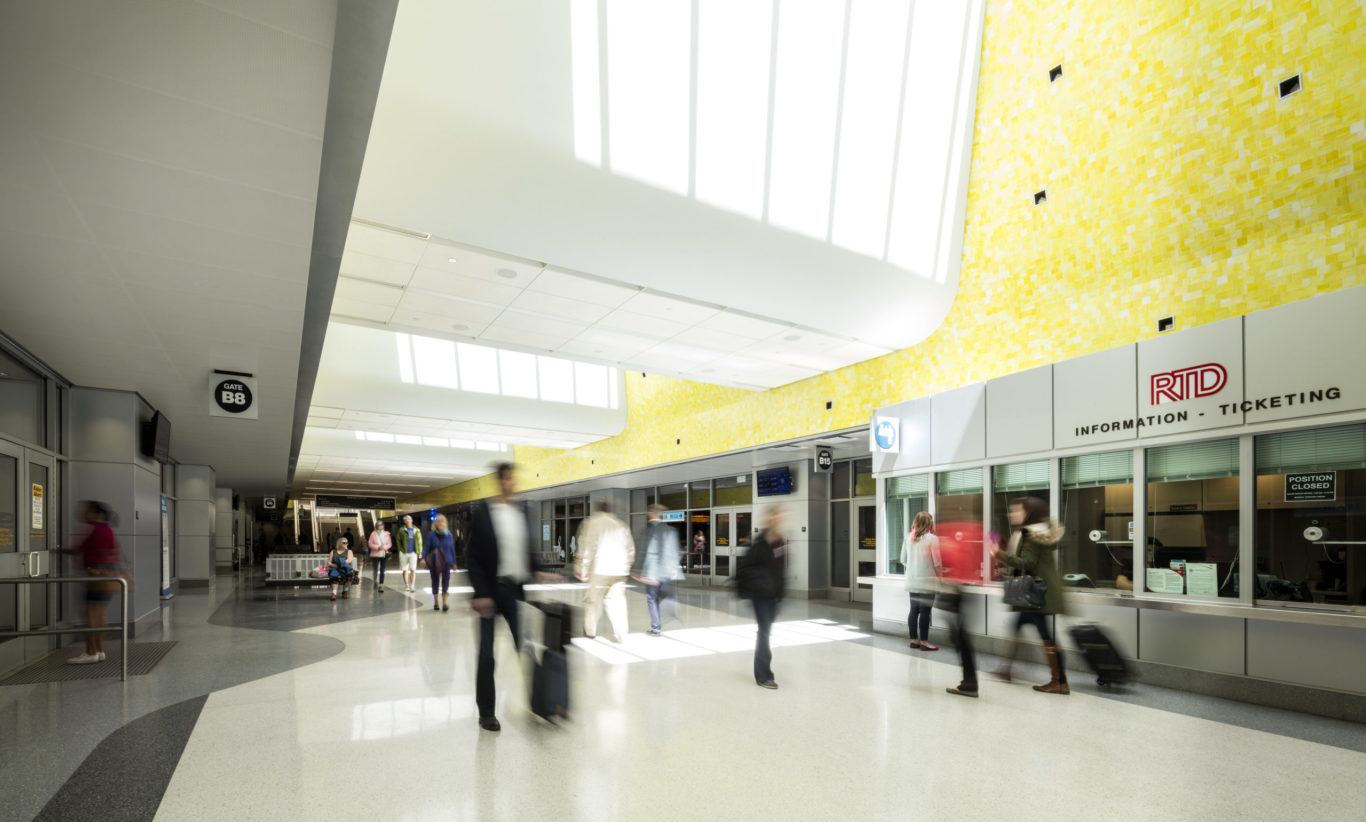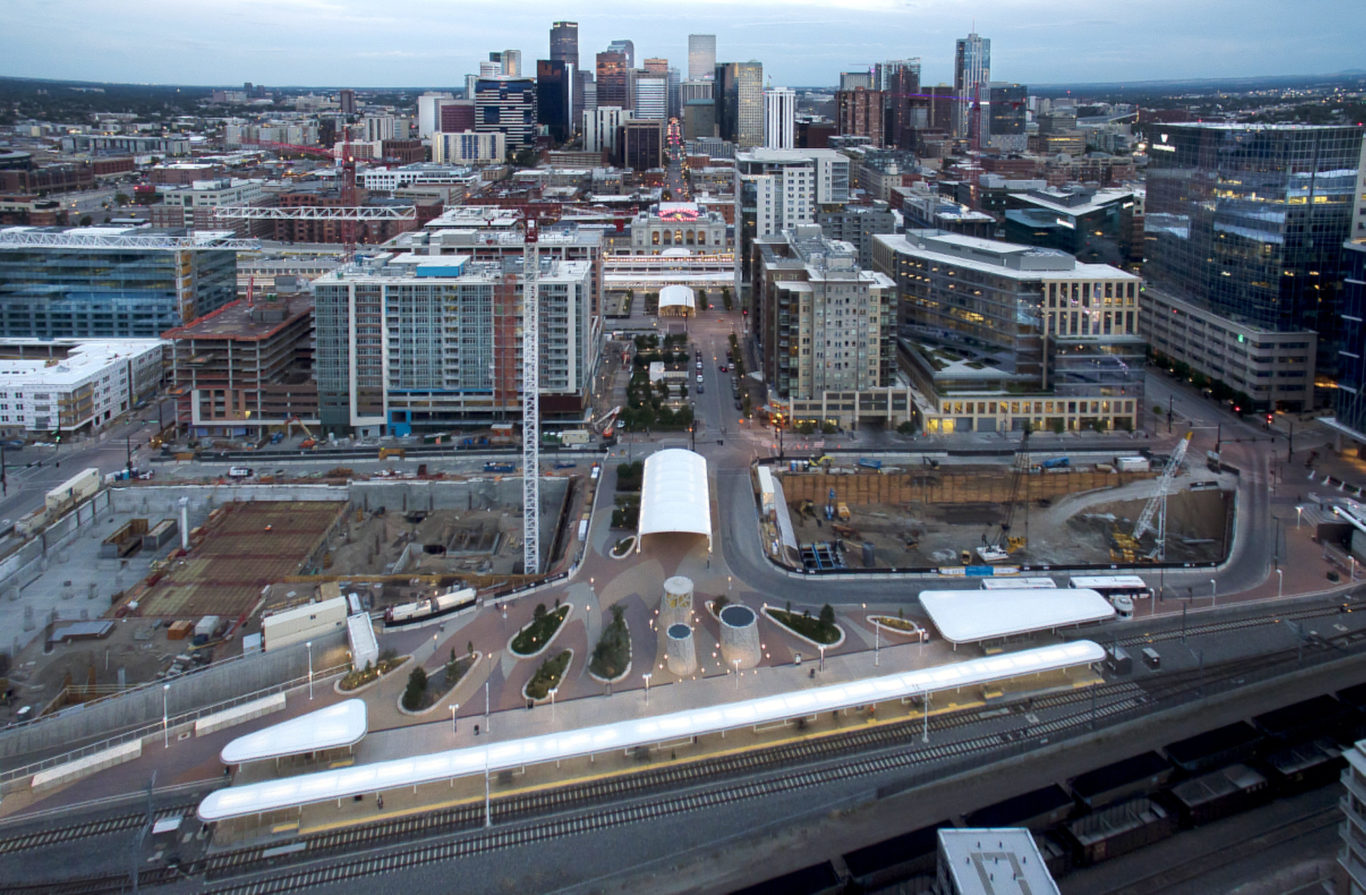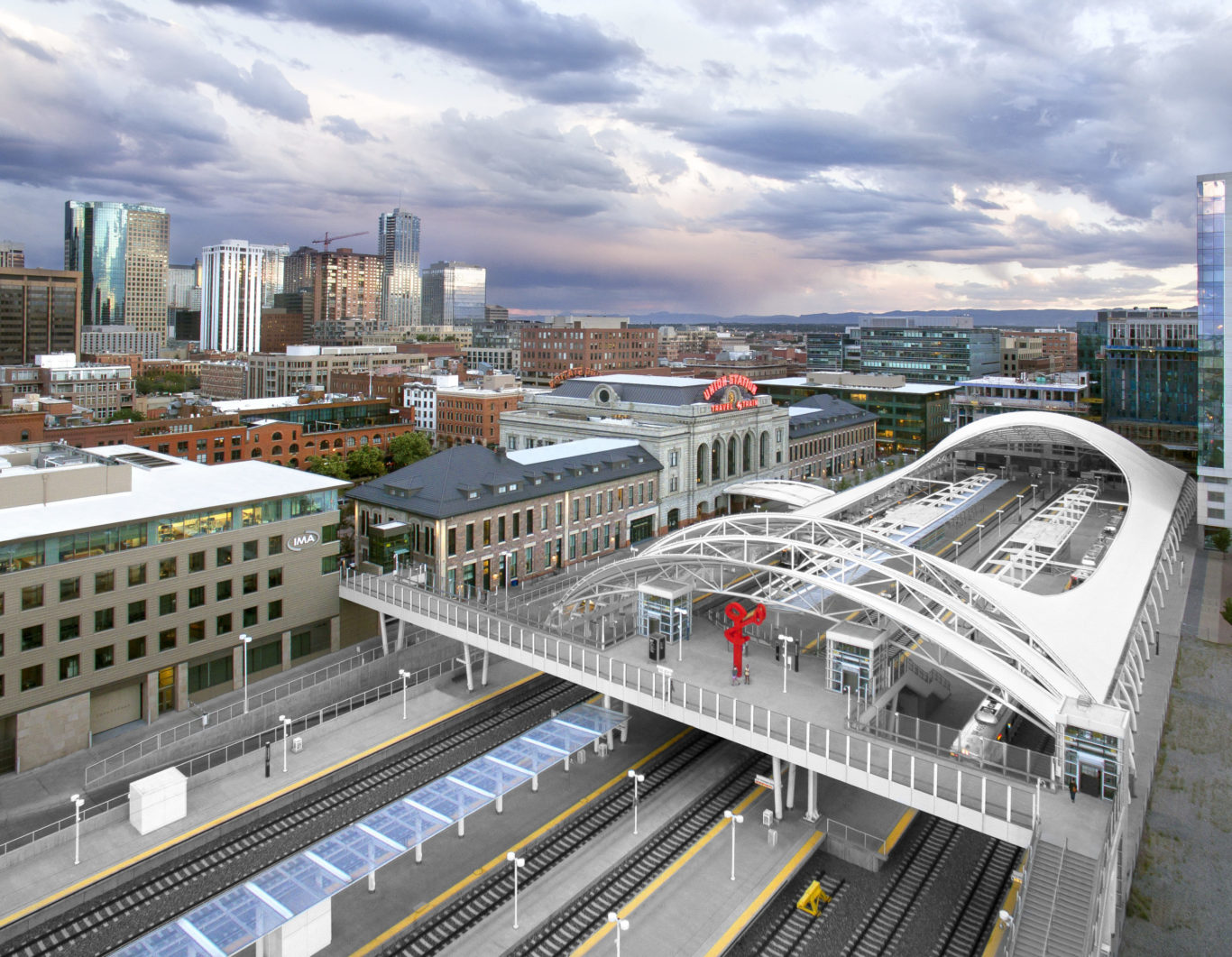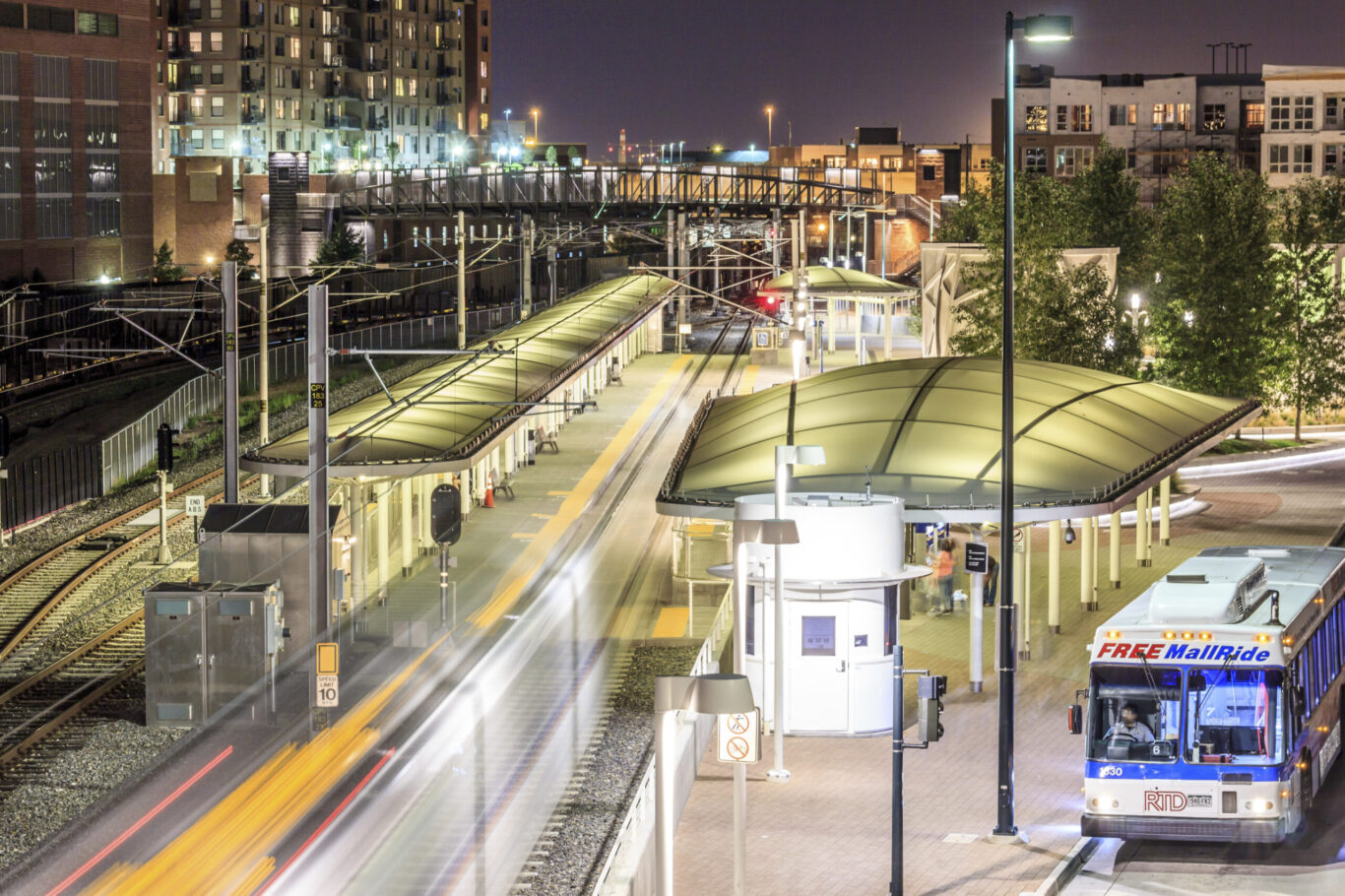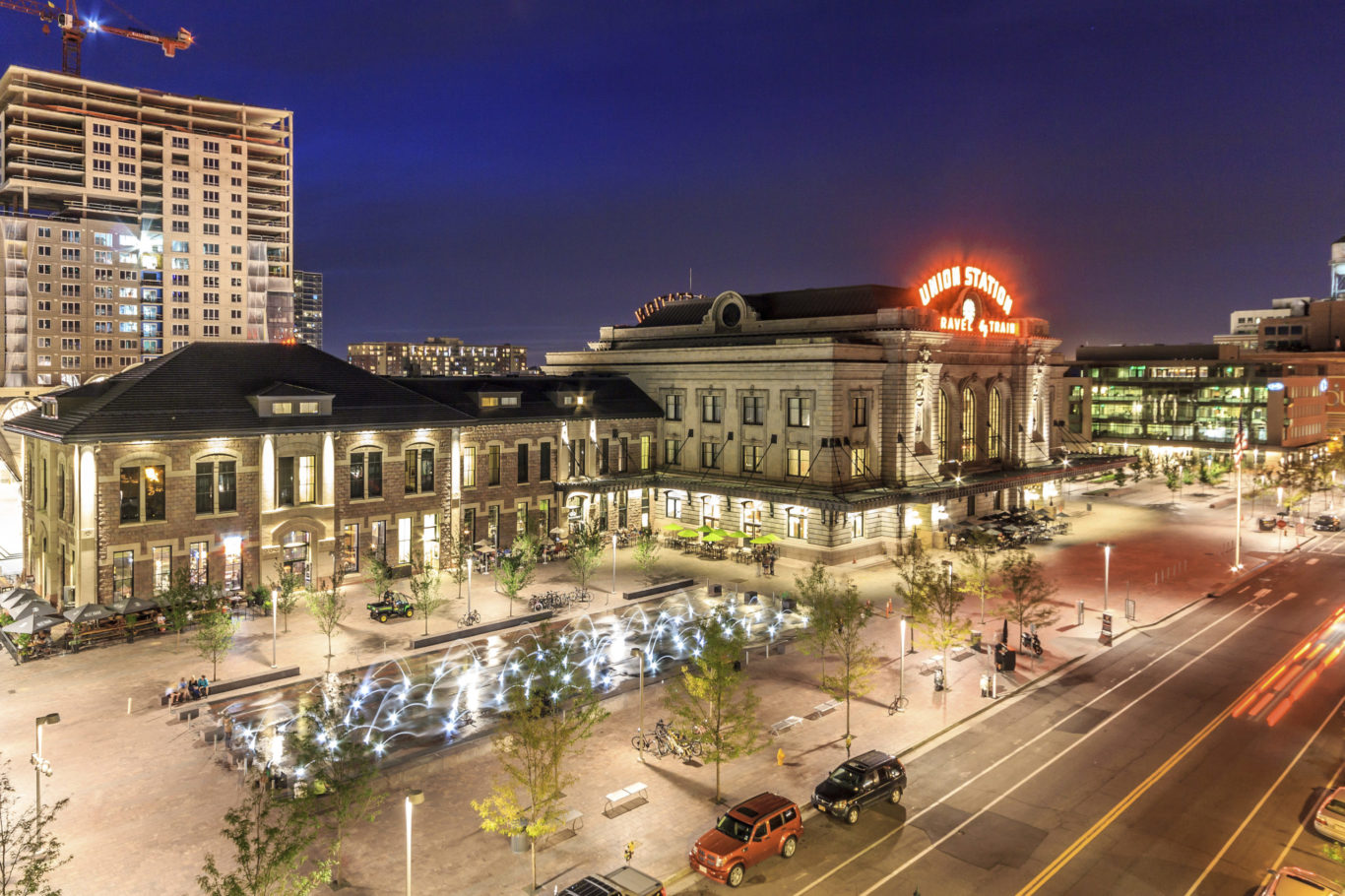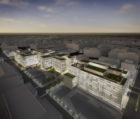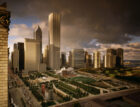A transit hub for the 21st century
The focal point of the reimagined Denver Union Station is a new open-air train hall, which sits directly behind the historic Beaux-Arts-style station building. The train hall’s iconic, swooping structure adopts the station’s axis of symmetry while creating a dynamic contrast between the old and the new. A bustling, two-block-long pedestrian promenade links the train hall to the SOM-designed light rail terminal, while an enhanced network of pedestrian and public spaces within and around the site seamlessly integrates the hub into the surrounding neighborhoods.

Underground, a 22-gate bus concourse services 16 regional, express, and local bus routes. The terminal, measuring 980 feet in length, serves a dual purpose as a pedestrian concourse that connects the constellation of transportation programs distributed across the site. Vivid colors and natural lighting help passengers orient themselves while handsome terrazzo floors and sparkling yellow glass tilework elevate the ambience of terminal beyond the often-unimaginative bus depot experience. A series of skylights and glass pavilions flood the hall with daylight, infusing the station with a sense of motion and spaciousness.
One of the largest projects of its kind in the United States, the redevelopment of the former rail yards at Denver Union Station is a case study of the power of transit-oriented urban design. This substantial public investment has catalyzed an unprecedented wave of private-sector activity. Sensitive to its historic location, but fundamentally forward looking in its technical sophistication and city-building spirit, Denver Union Station sets the standard for 21st-century intermodal hubs.
